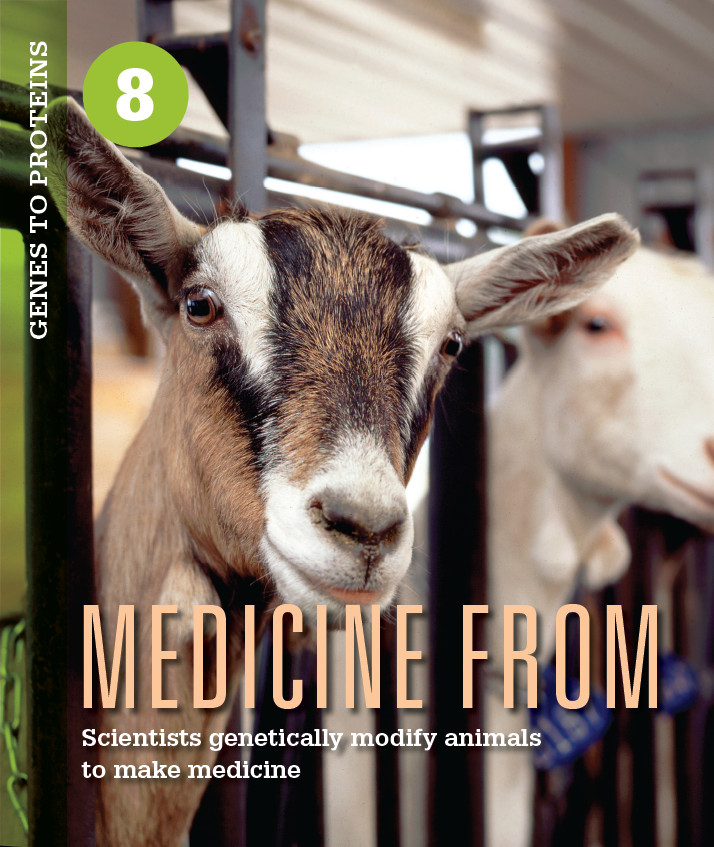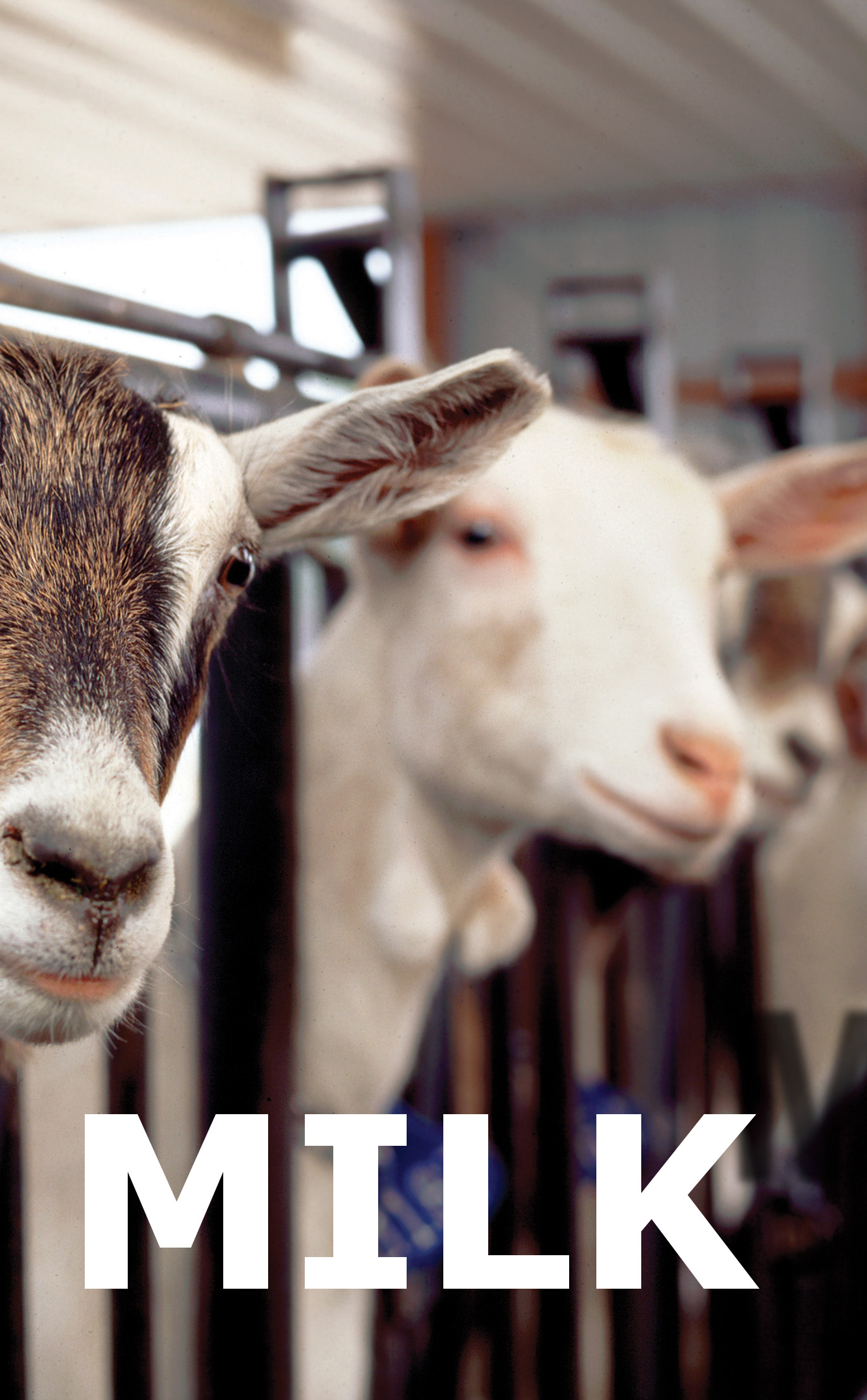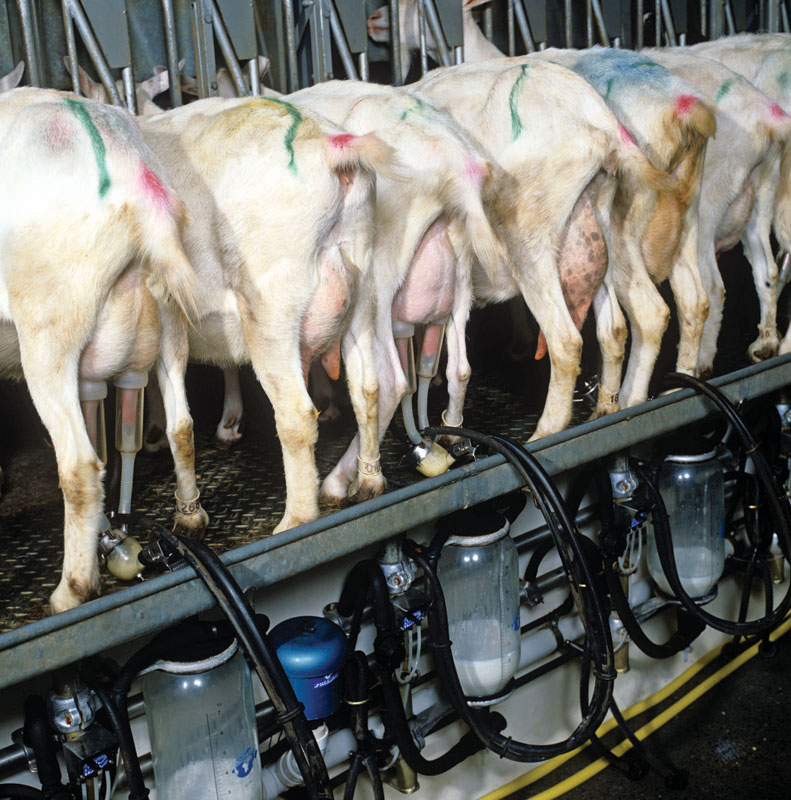Chapter Introduction
162


163
 N A MASSACHUSETTS BARN NESTLED AMONG willow and oak trees, rows of juglike machines drone in a constant hum. Goats, dozens of them, are being milked. But this is no ordinary dairy operation. This farm is one of several worldwide practicing the art of “pharming”–using genetically modified animals to churn out pharmaceutical drugs.
N A MASSACHUSETTS BARN NESTLED AMONG willow and oak trees, rows of juglike machines drone in a constant hum. Goats, dozens of them, are being milked. But this is no ordinary dairy operation. This farm is one of several worldwide practicing the art of “pharming”–using genetically modified animals to churn out pharmaceutical drugs.
The first drug produced from such genetically modified animals is already available, manufactured by rEVO Biologics, a biotech company based in Framingham, Massachusetts. The drug, called ATryn, consists of a human protein called antithrombin (AT) that was extracted from the goats’ milk. ATryn is used to treat patients with inherited antithrombin deficiency, which puts them at risk of developing dangerous blood clots, especially during surgery or childbirth.
For decades, scientists had extracted antithrombin from human blood donations. But blood contains only small amounts of antithrombin, and the supply depends on the number of blood donors. Genetically modified goats, however, can produce massive amounts of the drug in a relatively short period of time. There is also less risk of transmitting infections such as HIV and hepatitis to healthy people with this method.

 DRIVING QUESTIONS
DRIVING QUESTIONS
- What determines the shape of a protein molecule?
- What are the steps of gene expression, and where do they occur in a cell?
- How can animals be genetically modified to produce human proteins (with therapeutic uses)?
- What are some practical applications of genetically modified organisms in treating human disease?
164

Given these and other advantages, some scientists are predicting that genetically modified animals may one day replace human blood donors as a source of therapeutic drugs. “I’m a fan of this technology,” says Michael Paidas, co-director of the Yale Women and Children’s Center for Blood Disorders, who has conducted some early clinical trials on ATryn. “I think it’s going to be a wave of the future for a lot of these difficult-to-get blood products.” The Food and Drug Administration (FDA) approved ATryn for use in humans in 2009.
According to Harry Meade, the biologist who conceived the technology, rEVO has about 2,000 goats in its stable, located on a bucolic 180-acre farm in Charlton, Massachusetts. Five hundred of these goats can make enough antithrombin for the whole world, he says.
And antithrombin is just the beginning. The company has plans to produce numerous other drugs, for a wide range of diseases, from cancer to hemophilia. The ultimate goal is to make goats the drug factories of the future.